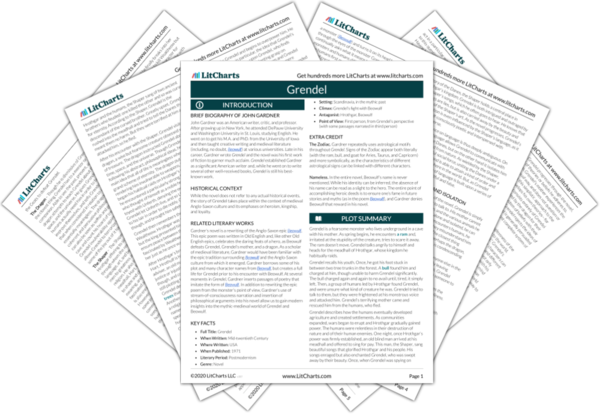Welcome to the LitCharts study guide on John Gardner's Grendel. Created by the original team behind SparkNotes, LitCharts are the world's best literature guides.
Grendel: Introduction
Grendel: Plot Summary
Grendel: Detailed Summary & Analysis
Grendel: Themes
Grendel: Quotes
Grendel: Characters
Grendel: Symbols
Grendel: Theme Wheel
Brief Biography of John Gardner

Historical Context of Grendel
Other Books Related to Grendel
- Full Title: Grendel
- When Written: Mid-twentieth Century
- Where Written: USA
- When Published: 1971
- Literary Period: Postmodernism
- Genre: Novel
- Setting: Scandinavia, in the mythic past
- Climax: Grendel’s fight with Beowulf
- Antagonist: Hrothgar, Beowulf
- Point of View: First person, from Grendel’s perspective (with some passages narrated in third person)
Extra Credit for Grendel
The Zodiac. Gardner repeatedly uses astrological motifs throughout Grendel. Signs of the Zodiac appear both literally (with the ram, bull, and goat for Aries, Taurus, and Capricorn) and more symbolically, as the characteristics of different astrological signs can be linked with different characters.
Nameless. In the entire novel, Beowulf’s name is never mentioned. While his identity can be inferred, the absence of his name can be read as a slight to the hero. The entire point of accomplishing heroic deeds is to ensure one’s fame in future stories and myths (as in the poem Beowulf), and Gardner denies Beowulf that reward in his novel.












